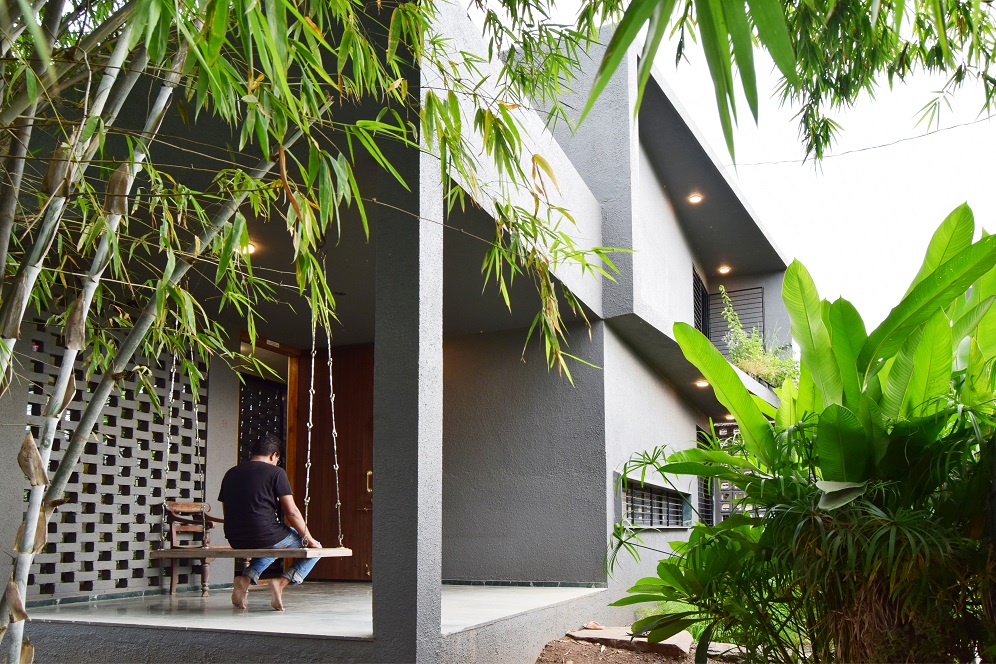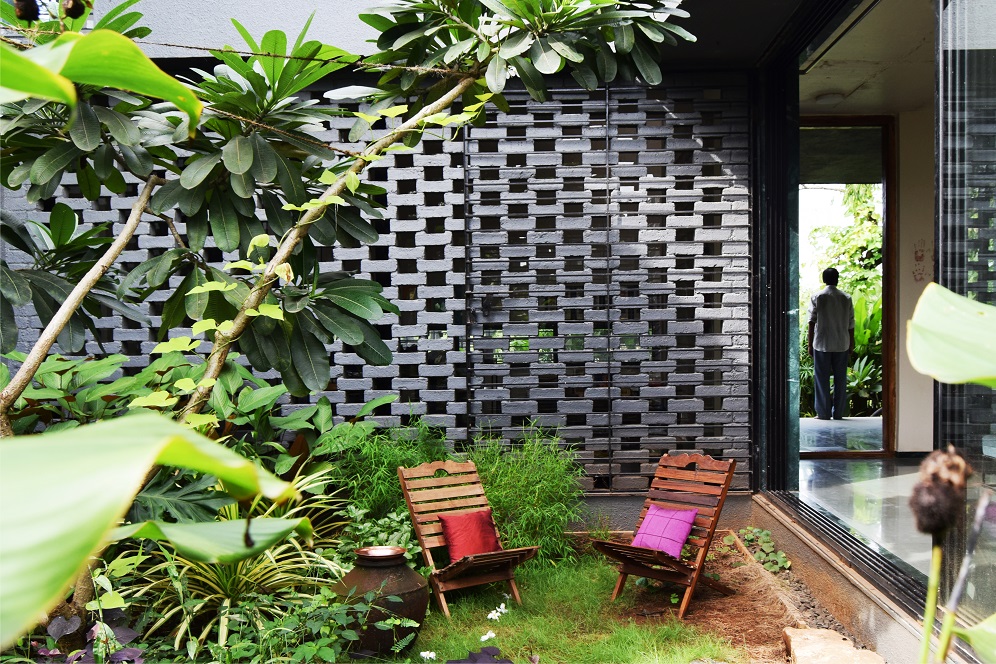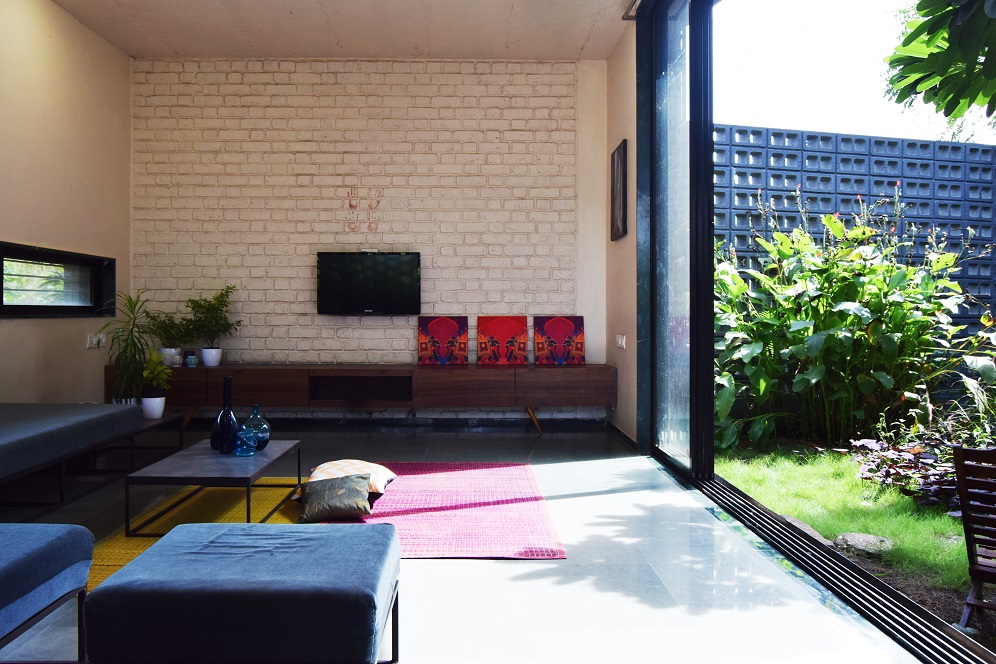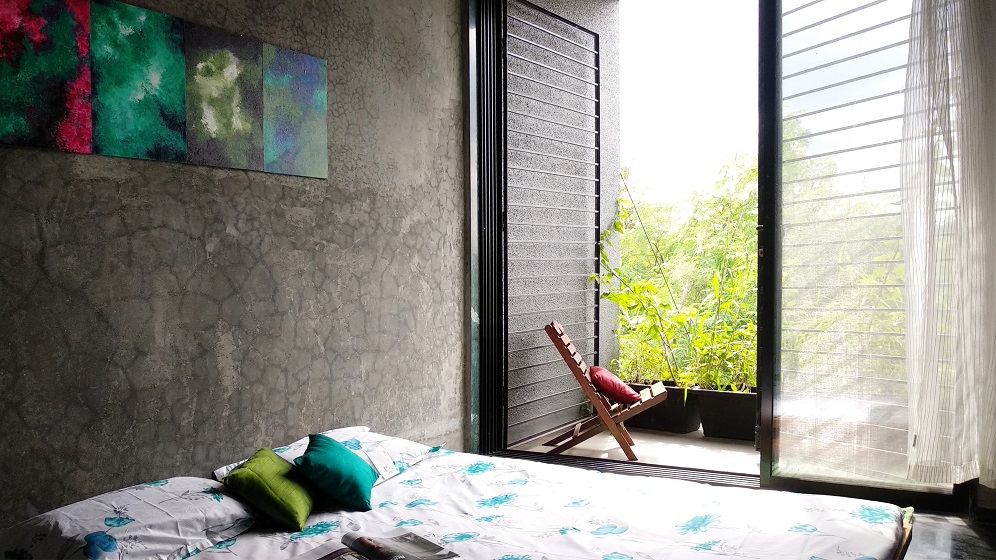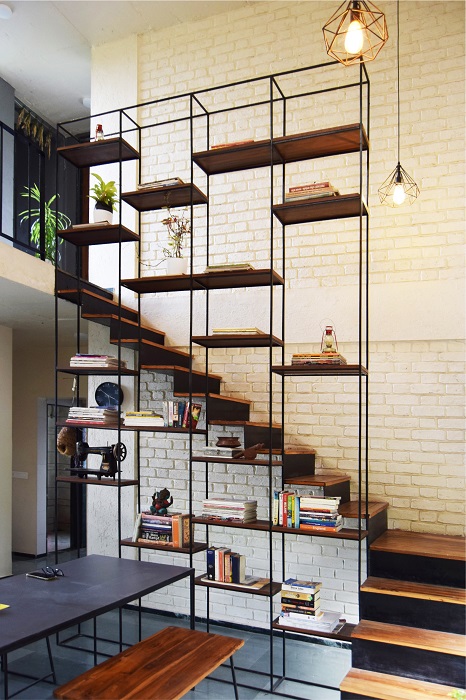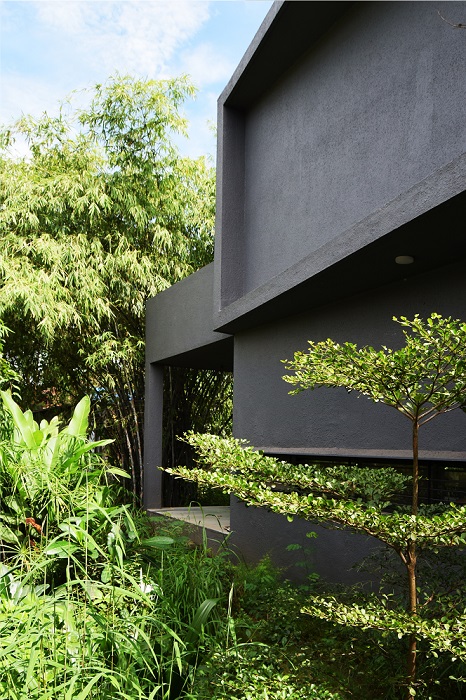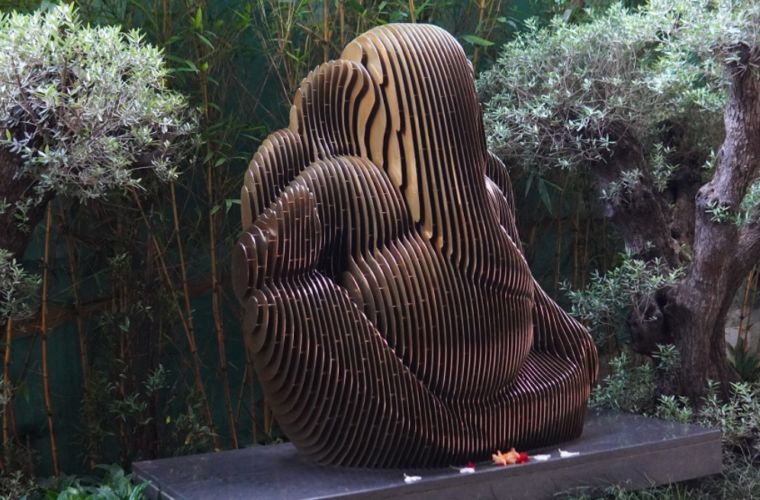Concrete fly-ash block jaali for Dakivali home
Mumbai-based unTAG Architecture and Interiors has designed the House in a Gaothan in Dakivali, which was to build a cost-effective home within the gaothan for a paddy farmer and a retired schoolteacher.
Positioned on a 5,000 sq. ft. plot abutting the dusty kutcha (unpaved) village road, the site was once a wasteland with a small bamboo grove. Flanked on two sides by traditional village homes in a closely-knit farming community, the house had to be both participative and reclusive. The farmer wanted his retirement home to be connected to nature yet be affordable.
Spread over 1,400 sq. ft., one enters through a traditional central courtyard (aangan). The courtyard with a young champa tree creates a comforting microclimate, and lowers the ambient temperature by three to five degrees Celsius. It is enclosed by a low-cost locally-sourced concrete fly ash-block jaali that acts as a buffer for dust and prevents direct visibility from the village road. The jaali screen serves as a measure of climate control by blocking sunlight, while allowing the breeze to flow through it.
While ensuring the residents’ privacy, the house has a road-facing entrance verandah on the west. Large, controlled openings establish a connection with the landscape, imbuing the compact indoor spaces with a feeling of spaciousness, through light and cross-ventilation. Multifunctional spaces optimize the floor plate, such as the double-height dining and pooja space that also serves as a library integrated with a metal staircase.
Wall surfaces, openings and projections are conceived through passive solar strategies to achieve optimum thermal comfort for the inhabitants and the terraces are painted white to reduce heat gain. Locally-manufactured concrete fly ash blocks, plastered walls and Indian kota stone foster economic and ecological sustainability. Recharge pits at key locations channelize the rainwater run-off into the ground, and wastewater is treated through phytoremediation (using living plants to clean up contaminated soil and water) and used for landscaping.


